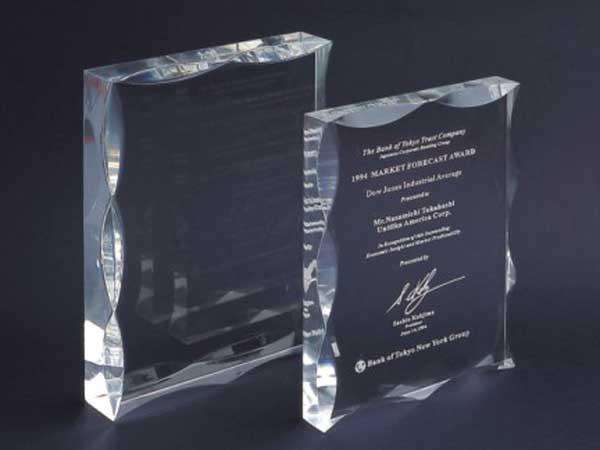As we all know, in addition to having good perspective and light transmittance, glass generally has a tensile strength much smaller than the compressive strength, making it a typical brittle material. At the same time, the thermal stability of glass is poor, and it is easy to explode due to rapid cooling and rapid heating. And because of its high chemical stability, it has strong resistance to acids, alkalis, salts, chemical reagents and gases. Therefore, when using traditional processes to process glass, there are always deficiencies in sustainability and stability. Taking glass In terms of marking, what are the advantages of laser marking on glass?

1 · Traditional glass processing methods
In terms of glass marking, the traditional processing techniques mainly include screen printing, thermal processing and etching:
screen printing
Glass screen printing is to use a screen printing plate and glass glaze to perform decorative printing on glass products.
Thermal processing method
The formed glass is reheated to the required temperature and kept warm for a certain period of time to process the glass. In addition to the high temperature problems in the glass processing project, due to the poor thermal stability of the glass, the glass is often prone to bursting during the processing. .
Etching
Glass etching refers to etching glass with hydrofluoric acid, etc. to form patterns. The glass etching pattern can be obtained by coating the glass with paraffin wax, then using a tool to carve a pattern on the paraffin wax, and then applying hydrofluoric acid on top. On the one hand, hydrofluoric acid is easy to volatilize and easily cause pollution, and at the same time, the overall process is also complicated.
2 · Laser glass marking
Laser glass marking mainly includes glass surface engraving and glass internal engraving. Glass surface engraving uses laser energy to destroy the glass surface; glass internal engraving produces small broken points inside the glass, which appear white due to light scattering. The only difference is that the focus of the laser is adjusted to the glass surface or inside:

Laser marking
Engraving can be performed when the laser energy density at the laser focus point is greater than the critical value that causes glass damage (damage threshold). At the same time, the energy density of the laser processing area is lower than the damage threshold of the glass before and after the processing area. By controlling the focus position through a set computer program, a specific shape can be carved on the surface or inside of the glass while keeping the rest of the glass intact. .
Laser blackening
Nanosecond laser alone cannot mark black on glass. In order to mark black on glass, we need to use a target material. This method uses laser light to interact with the target material through the glass to overcome the defect that the glass cannot directly absorb the laser pulse. Mainly include laser-induced plasma etching – stainless steel, copper and other metal materials; and laser back wet etching – organic solvents such as toluene and acetone.

